How I Stopped My Dog From Pulling on the Leash
Owning a dog means caring for them and doing what you can to meet their needs. You need to feed your dog and offer them a place to sleep, and you must take your dog on walks. However, you can run into problems while going on walks, such as a dog pulling on the leash.
While dogs get excited during walks, you don’t want them constantly tugging and pulling on the leash. If your dog won’t stop running in different directions and trying to get you to go somewhere, you need to stop that habit. When you understand why dogs pull on the leash and the techniques you can use to stop it, you’ll make walks easier for both of you.
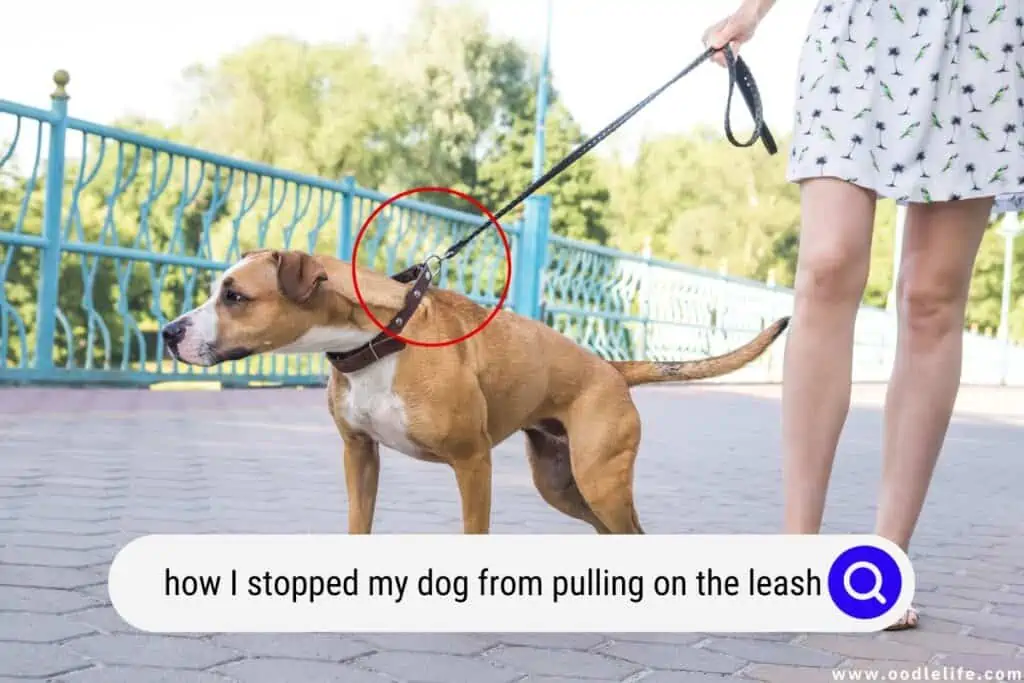
Why Do Dogs Pull on the Leash?
If you plan to prevent your dog from pulling on the leash, you need to figure out why they do it. Dogs react to situations before they do anything, so they always have a reason when they pull on the leash. You can start by going through these common reasons:
- Found something interesting and wants to investigate.
- Wants to keep walking and stay active.
- Feels like the leader and behaves as such.
- Leash is too long, giving you less control.
Dogs have a stronger sense of smell, hearing, and sight than humans. So as you go on walks, you’ll naturally come across scents that may interest your pet. For example, if your dog pulls in a specific direction, they may have found something they want to investigate.
Some dogs go on walks to get exercise. If you walk too slow for your pet’s pace, they may pull on the leash to get you to move faster. You can usually tell when a dog feels this way when they don’t take time to stop and sniff around the area.
Most dogs have a leader in the pack, so they often choose their primary owner as the leader. However, if the dog feels like they have to take charge, your furry friend may also feel like they lead during walks. When that happens, they pull on the leash to control the situation.
Giving your dog too long of a leash can encourage them to pull. If you go with a longer leash, your dog may run off and get a sudden pull. So instead, aim to keep it under 25 feet when possible.
While these reasons may not apply to your dog, they put you in the right mindset to figure out why dogs pull on the leash. If you understand your dog, you can change your walks and strategies to get your dog to stop doing it.
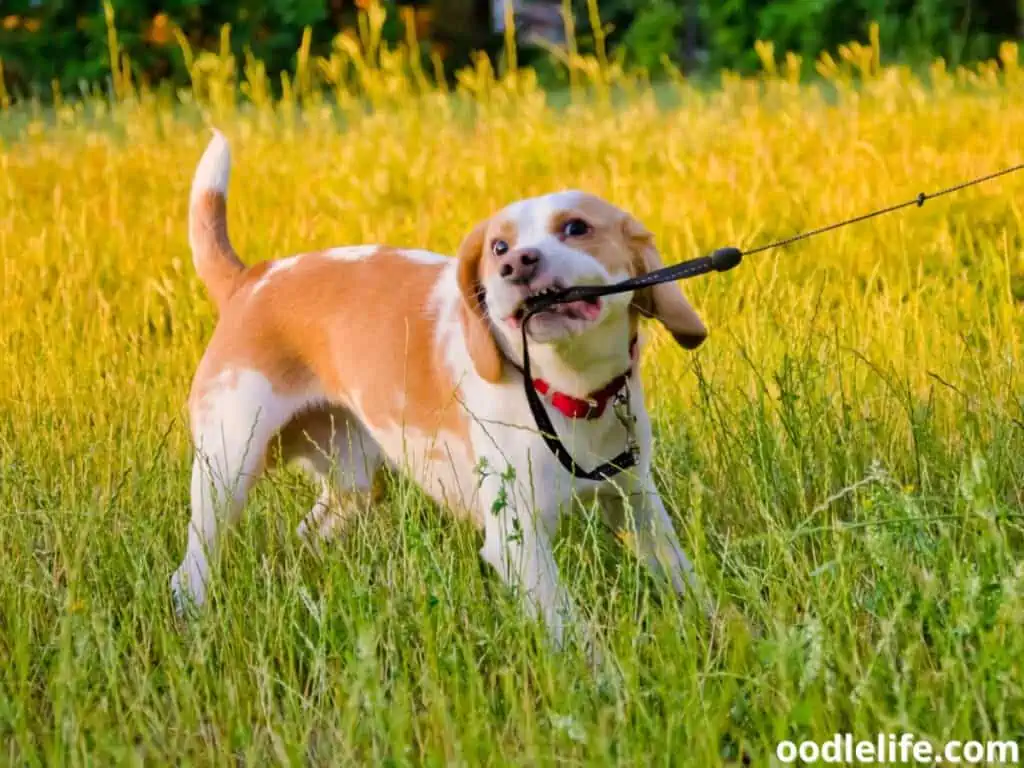
How To Stop Your Dog’s Leash Pulling?
Once you understand why your dog pulls on the leash, you can make some changes to get your furry friend to stop. Try different ideas to figure out what helps your dog. Dogs have different personalities, so you must find the best technique to make your furry friend happy.
Remain Consistent
As you train your dog, remain consistent and plan out your approach. Dogs learn best when you stay consistent and establish rules. Otherwise, your pet will be confused and won’t understand why they shouldn’t pull on the leash.
It’s important to follow your training every time your dog pulls on their leash. Don’t act beforehand or not do anything about it. Either will cause your dog to persist with the habit and potentially encourage them to pull when they want something.
You can’t remain consistent if you don’t know what you plan to do. So before you execute your plan, figure out how you want to train your dog. Doing so will help you react to situations and know how to handle them before they catch you by surprise.
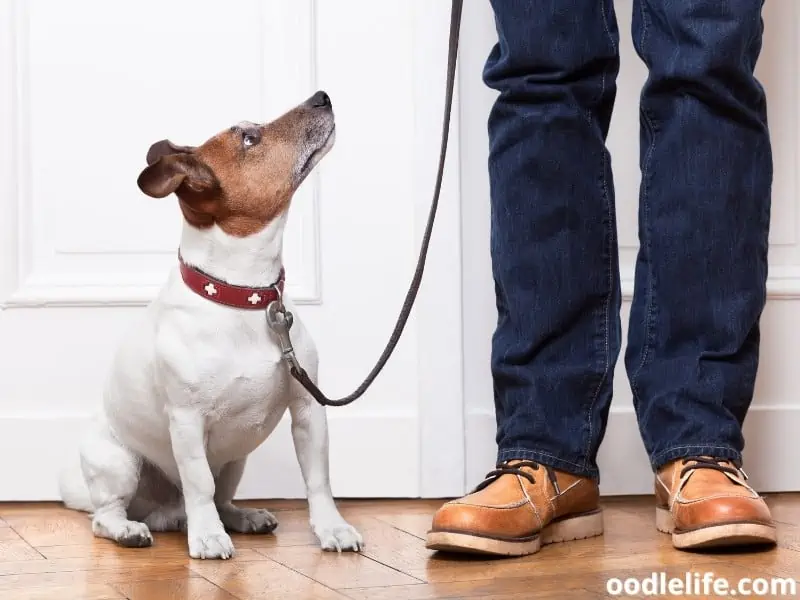
Identify Positive Reinforcement
Dogs respond best to positive reinforcement, so look to reward them when they don’t pull on the leash. With that in mind, be sure to have treats on hand when you take your pet out for walks, or whenever they need a leash. Doing so will encourage your dog to be more amenable to listening to your instructions.
Of course, if your dog starts to pull on the leash, don’t give them treats. Wait until they stop pulling and reward them with some goodies. As you keep it up, your pet will start to associate not pulling on the leash with positive emotions.
Some dogs may not respond well to giving them treats when they stop pulling. If that’s the case for your pet, you may need to distract them with treats by using commands such as “come,” “here,” or something similar. The distraction technique might work best if your dog tends not to be forceful.
You can eventually transition to petting and positive reinforcement that doesn’t rely on treats. For example, use a happy voice to show them you’re pleased with what they did (or didn’t do).
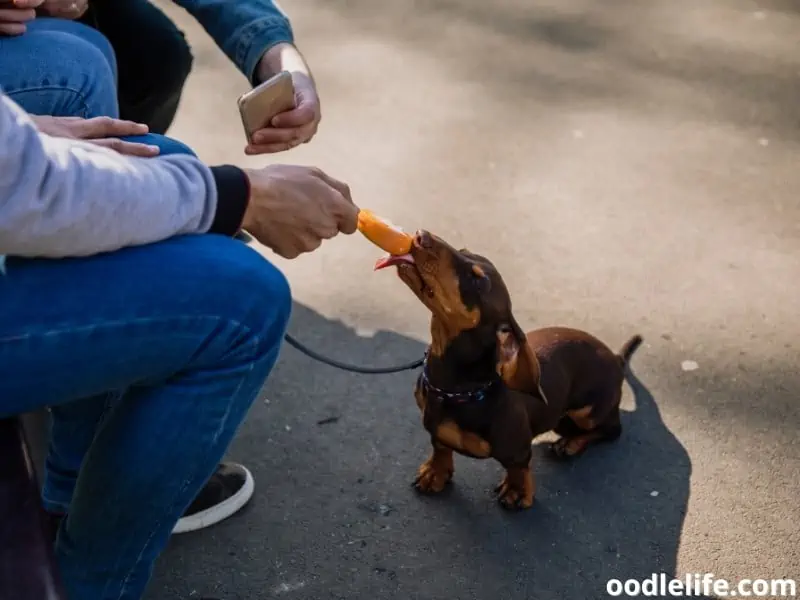
Pay Attention and Walk When They Don’t Pull
You must pay attention to your pup’s behavior whenever you take them on a walk. Being observant of their habits will help you identify the source of the leash pulling. Your dog could do so for several reasons:
- Sees another dog and gets excited.
- Starts to get scared and wants to pull away from the source.
- Becomes tired and more irritable.
Your dog may pull on the leash if they see another canine in the distance. If you want to train your pooch to not pull on the leash, don’t move until your dog stops. Doing so will teach them not to pull when they want something.
Dogs may hear a loud noise, get scared, and tug towards the house. When your dog gets fearful, you will want to remain calm and wait for them to stop and look at you. Once they do, you can either walk them back or pick them up.
Follow the same approach when they become tired.
You must wait to see how your dog reacts in each of these situations. By being reactive (rather than pre-empting behavior), you can reinforce good behavior without making your pet uncomfortable.
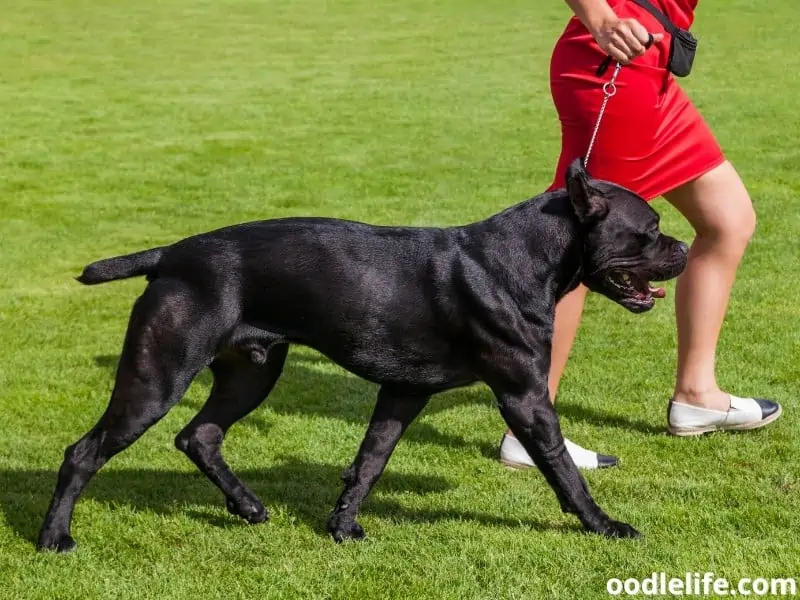
Turn and Walk the Other Direction
If your dog keeps pulling on the leash, you may need to walk in a different direction. You will need to take several steps when taking this action:
- Turn away from your dog.
- Walk in the other direction.
- Stop when you feel slack in the lead.
Turning the other way shows your dog a refusal to go with their plan. Since you’re stronger than them, they can’t pull you in the other direction. While this is a firm approach, it will indicate that you won’t tolerate the behavior.
Walking in the other direction also shows purpose. Your dog will realize you can’t see them, so you won’t walk in the direction they want to go. That will demonstrate your intention, forcing your pet to decide to either keep pulling or follow you.
Once they stop pulling, turn around and go in the direction they want to. Such an approach teaches your dog to stop pulling to get what they want.
Your dog may take some time to pick up on this training, but they’ll learn eventually. Even if your dog pulls, stick with your plan to establish your leadership while putting the bad habit to rest.
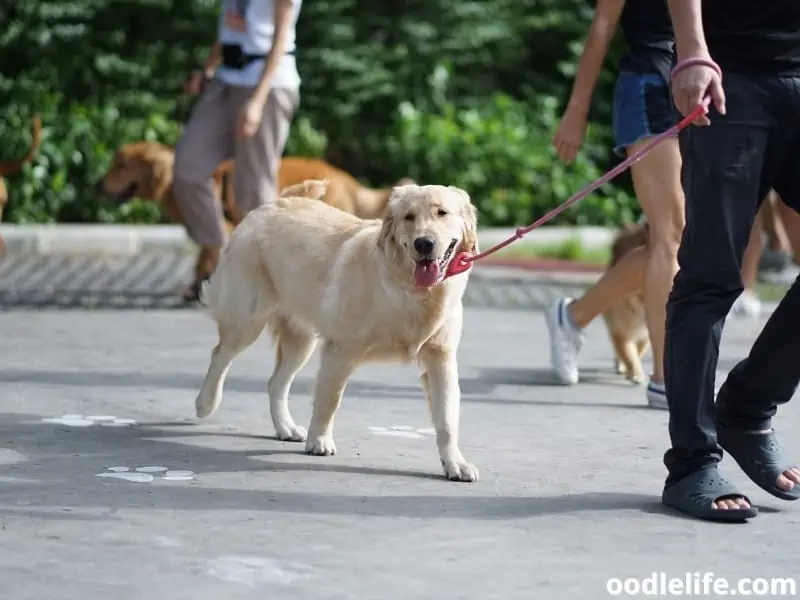
Avoid Common Distractions
Dogs tend to get tunnel vision when something interests them. So if you want to avoid them pulling towards the distraction, you should avoid whatever might capture their attention in the first place. This approach will ensure your dog does not pull as often since they don’t have a reason to do so.
For example, if roadkill tends to draw your dog, do your best to avoid going near any. If your dog sees any, they are liable to pull in the direction of the animal, which could be highly disruptive to their training.
Of course, you need to consider other distractions your dog might come across. After all, your beloved pet could end up barking at other dogs, get distracted by bikes, or otherwise find themselves in a situation that compels them to pull. The distractions vary based on your dog’s and their personality, so pay attention to your furry friend’s impulses.
You never want to go to areas where your dog faces constant distractions. However, if it cannot be avoided, focus on following the other techniques to discourage pulling.
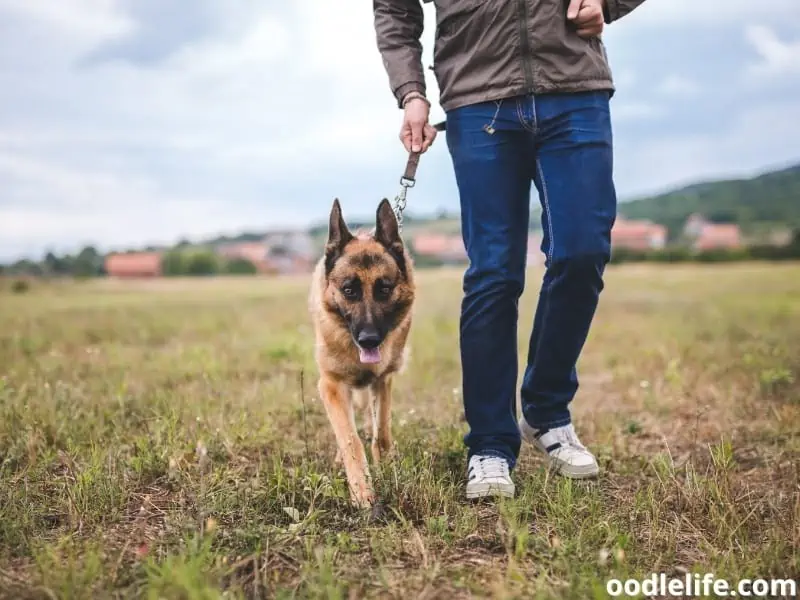
Try a Training Collar
Dog shock collars can be one option if the other techniques don’t work. These training collars come in three main varieties: shock, vibration, and sound. They give a minor shock to dogs to stop them from misbehaving.
However, some people feel shock collars are inhumane, so vibration and sound collars are often considered to be the better choice. Vibration collars distract the dog by having them focus on the vibration. The sound works similarly, except it plays a noise to divert a pooch’s attention.
If your dog keeps pulling on the leash, you can use a training collar to get your dog to stop. You can keep using it until your pet learns to stop pulling. You can also keep it on hand when your dog faces an unexpected distraction.
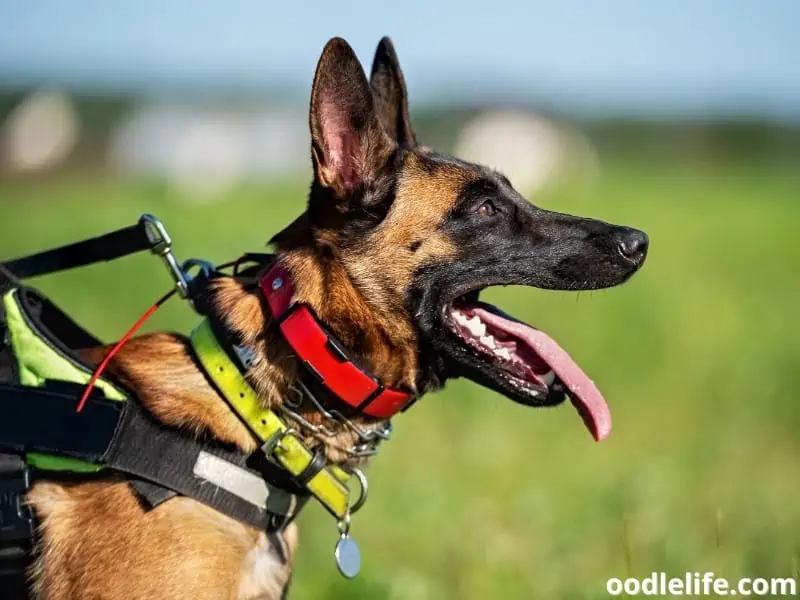
What If My Dog Makes a Choking Noise?
Some dogs will make a choking or gagging noise when they pull on the leash too hard. When such a situation happens, you’ll naturally become worried and want to avoid the situation to ensure your furry face doesn’t face discomfort.
You most likely use a collar and leash if you notice your pet chokes on a leash. They may take time to stop pulling, so get rid of the collar. Since the collar goes around the neck, you increase the odds of choking and injuring your dog.
Consider switching to a harness since it goes around the entire body. First, try to find the right tightness that doesn’t move around but doesn’t make your pet uncomfortable. If they still choke while wearing a harness, you may need to loosen it.
A choking noise is always an indicator that something is amiss, and pulling typically leads to it occurring. Once you train your dog to stop pulling on the leash, you won’t have to worry about them potentially choking.
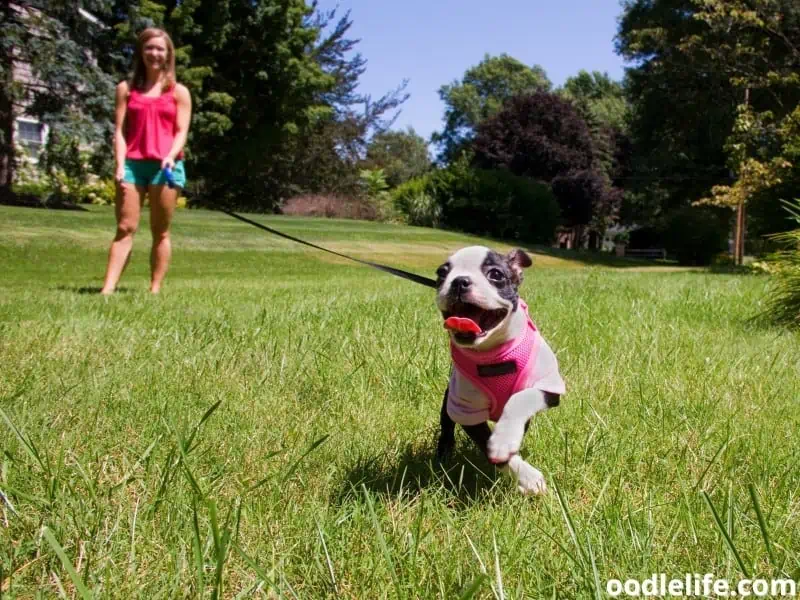
Did I Wait Too Long?
You may have heard the phrase “old dogs can’t learn new tricks” before. Many owners believe this statement and think they can’t retrain their pets or show them something new once they start to age. However, the information doesn’t stand true since old dogs can learn new tricks.
Senior dogs are more than capable of developing habits and even unlearning those they’ve long exhibited. In fact, some older dogs learn new behaviors faster than puppies who get easily distracted. Of course, it will still require training, so you must stick with it until your dog learns.
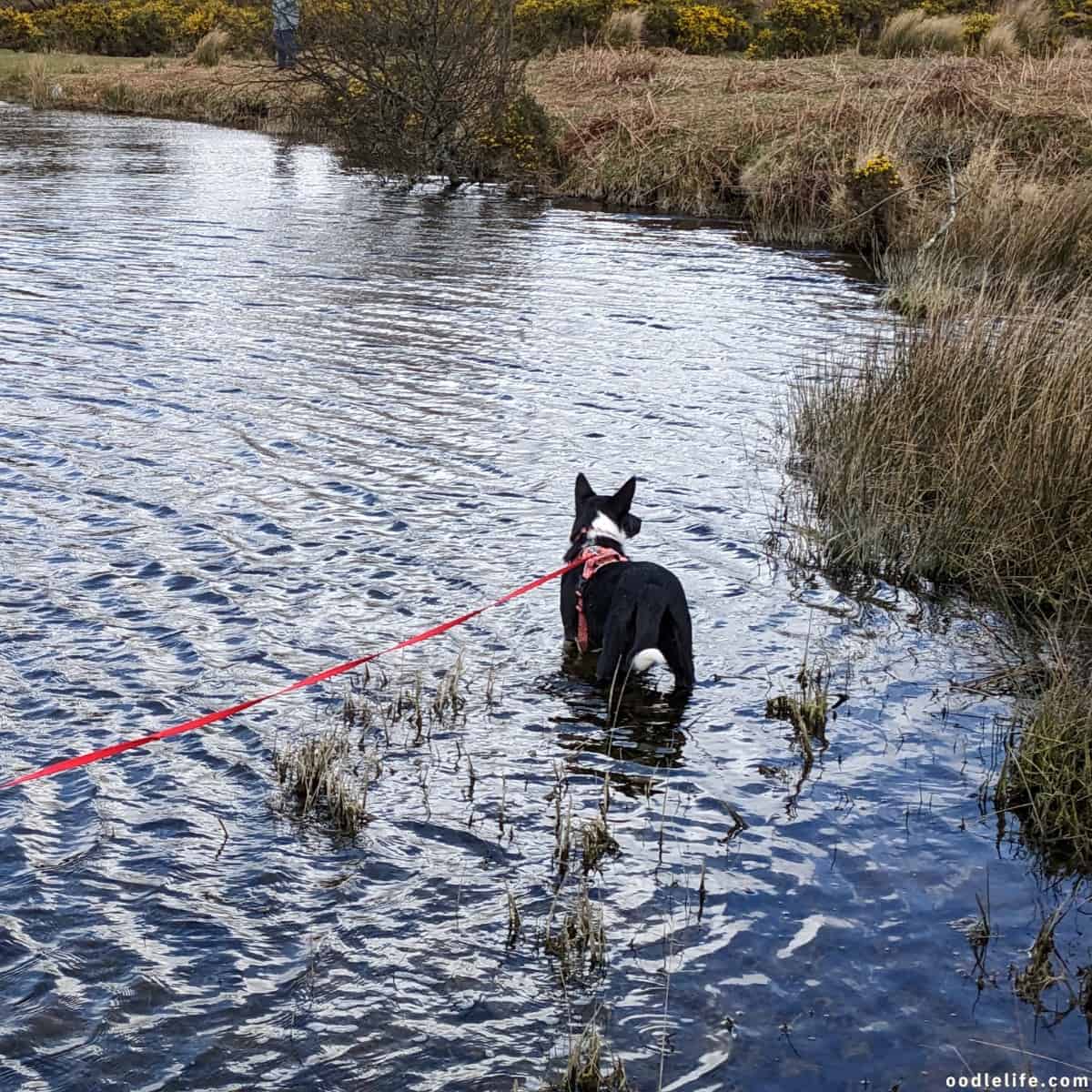
Remember that some dogs may have stubborn personalities, meaning they take more time to train. Still, as you remain strong and stick with the training, your pet will eventually learn and stop pulling on the leash. You’ll need to use positive reinforcement throughout the process.
While it’s best to focus on leash pulling when your dog is a puppy, they need to stop the habit regardless of age. Starting today will help you sooner than starting tomorrow.
![Why does my dog walk and poop? [Answers]](https://www.oodlelife.com/wp-content/uploads/2022/04/walking-labrador-retriever-1024x768.webp)
Conclusion
If you have a dog pulling on the leash, you can train them to stop. When you stop this habit, you can make your walks less stressful, not as dangerous, and a better experience for you and your furry friend.
It will take time and training, but you’ll find the effort worth it when your dog starts to behave during your walks. Make sure you figure out which strategies work the best and don’t give up. Doing so will help your dog adjust to their new structure and give them clear rules for walks.